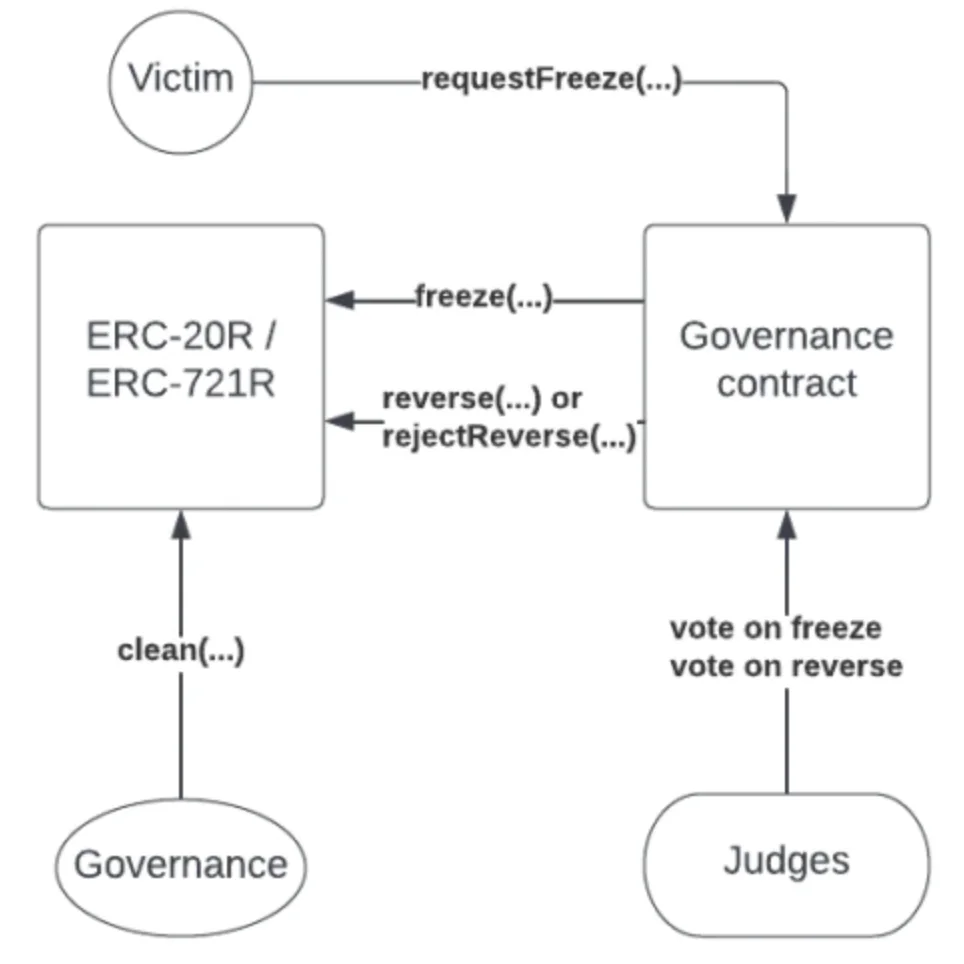Decentralized courts. Is there a need for reversible Ethereum transactions?
Experts assessed whether a new standard of tokens with the ability to return them after transfer will take root

28.09.2022
1003
6 min
1
Stanford University researchers have developed a prototype for reversible transactions on the Ethereum network (ETH). According to them, the technology will help protect against the theft of digital assets and generally reduce the risks of hacking and fraud around crypto projects and cryptocurrency owners.
A member of the development team, Kaili Wang, published an article on the blog with the details of the concept. Wang immediately clarified that the researchers' idea is still in its early stages, and they would like to provoke discussion, and perhaps find more effective solutions suggested by professionals in the crypto community. “The major hacks we've seen are undeniably thefts with strong evidence,” Wang writes in the article, adding that even with evidence, there is no way to undo the transactions associated with the stolen assets.
Wang and her colleagues proposed two new token standards, ERC20R and ERC721R. As they envisioned, they would be add-ons with transaction rollback capabilities for the existing ether tokens of the ERC20 standard and the non-fungible tokens (NFTs) to which the ERC721 standard corresponds. The proposed standards would combine both the contract for the token itself and the contract for management. The latter would be governed by a “decentralized judiciary system” whose judges would vote to freeze or cancel transactions deemed fraudulent.

The process of freezing and reversing a transaction. Source: Mirror.xyz/kaili.eth
With proper evidence, the victim of a theft or hacking attack can submit a request for a management smart contract. By submitting a request to freeze funds, the victim pays for the legal process, and the rewards are distributed among a group of decentralized judges. The increased fees will raise the priority of the request. If a majority of the decentralized judges vote in favor of the victim, the funds are frozen and the trial begins. As the researchers intend, both the victim and the hacker can present evidence to the judges, who also vote on the outcome of the case. Based on the final vote, the funds are either returned to the victim or the request is denied.
Whether a new standard is needed
According to Berezka DAO & Weezi co-founder Roman Kaufman, the ERC-20R and ERC-721R token format is completely real and necessary, especially when it comes to attracting institutional investors to the crypto industry. “Already, the big problem is that if a person gets just one character wrong [in the address when transferring an asset], they can lose money forever,” Kaufman reasons, calling such a scenario the main fear of large companies and funds in the crypto industry. Reversible Ethereum transactions could remove this problem and speed up the process of integrating institutional investors into the crypto segment, the expert says.
“It is clear that this brings a smile to blockchain old-timers, but here we see a clear market demand for such functionality,” comments Vladislav Utushkin, founder of TOTHEMOON group of companies. If we speak about cryptocurrency as a full-fledged alternative to fiat money, transactions cannot and should not go one-way, the expert believes. According to him, there are already numerous requests from people who have recently entered the world of cryptocurrency, have not yet understood it, have sent money to fraudsters and are looking to challenge the transaction.
NFT fraud. What are the schemes and how to protect yourself
According to Utushkin, the new token standards can not only blend into existing cryptoservices, but also create a class of new ones, such as those comparable to letters of credit in the traditional world. “In other words, payments to a vendor or service provider can only be transferred if he or she has transferred goods, provided a service, and so on. I think such functionality will enter our lives quite firmly in the near future,” Utushkin believes.
“Undoubtedly, integration [of new standard tokens] is not just possible, but will immediately take place in the largest crypto exchanges, because it is through them that black and gray transactions often pass,” argues Kaufman, explaining that due to such technologies exchanges will be able to recover stolen customer funds faster. In his opinion, the idea of rolling back transactions fits perfectly with the idea of a free crypto market without a single regulator. Since all disputes will be resolved by a decentralized group of judges rather than an affiliated company, bank or fund, it will allow for a more objective resolution of disputes in favor of the victims.
“Thanks but no thanks”
An avid Ethereum supporter and host of The Daily Gwei podcast Anthony Sassano, like many others in the social media discussion, spoke out against the Stanford researchers' initiative. “I'm all for people coming up with new ideas and putting them out into the ether but I'm not here for TradFi 2.0 Thanks but no thanks,” Sassano wrote on his Twitter account, which has more than 220 000 followers. TradFi comes from the term “traditional finance” and emerged as an opposition to the field of decentralized finance (DeFi).
I'm all for people coming up with new ideas and putting them out into the ether but I'm not here for TradFi 2.0Thanks but no thanks https://t.co/pdSIB5Ib05— sassal.eth 🦇🔊 (@sassal0x) September 25, 2022
Sassano explained that decisions about transaction returns, as well as means to protect users, should be within the responsibility of exchanges and crypto services, rather than inside the blockchain or smart contracts code.
Blockchain, cryptocurrencies, and any assets in the Web 3.0 segment exist as an alternative to centralized systems, reminds ENCRY Foundation co-founder Roman Nekrasov. “Control over the asset [in the cryptocurrency sector] is back in the hands of the owner. But since the entire history of mankind is associated with centralized institutions, it is difficult to switch ideologically to decentralization. I see the Stanford scholars' initiative as an attempt to return decentralization to the usual centralized way,” the expert argues about the content of the proposal to create a new token standard.
In his opinion, the “decentralized court” acts as an embodiment of central regulators, which blockchain was created to replace. “Let's also come up with a Central Bank that will issue bitcoins,” Nekrasov draws an analogy. In his opinion, such an initiative is unlikely to take root in the crypto market, and will probably be implemented in some form in “pseudo-decentralized” ecosystems like the Coinbase crypto exchange.
According to Chainalysis, crypto projects' losses from hacking attacks this year amounted to about $2 billion, and their number increased by 60% compared to 2021. Cryptocurrency users' losses from theft and fraud in 2022 are estimated at $1,6 billion. Protocol-level solutions to protect funds exist only as concepts, but major cryptocurrency exchanges are implementing more tools to minimize risks to users and cooperating with law enforcement agencies.
Useful material?
Articles
How the largest cryptocurrency exchange’s initiatives help it maintain its leadership
Nov 19, 2022
Articles
What fan coins are needed for and what events contribute to their growth
Nov 16, 2022
Articles
Why Binance set the trend to publish transparent data on available funds
Nov 14, 2022
Articles
The journalists got acquainted with the documents revealing the details of the financial condition of the exchange
Nov 13, 2022
Articles
Desperate traders with stuck assets resort to semi-legal schemes to save deposits
Nov 11, 2022
Articles
Experts predict when to expect new peaks of the crypto market by analyzing its previous cycles
Nov 10, 2022









 Telegram
Telegram  Twitter
Twitter